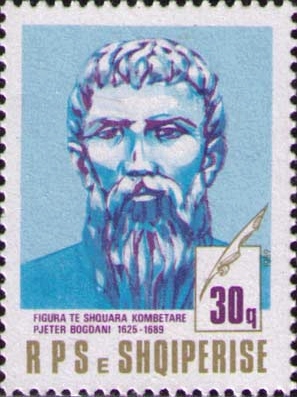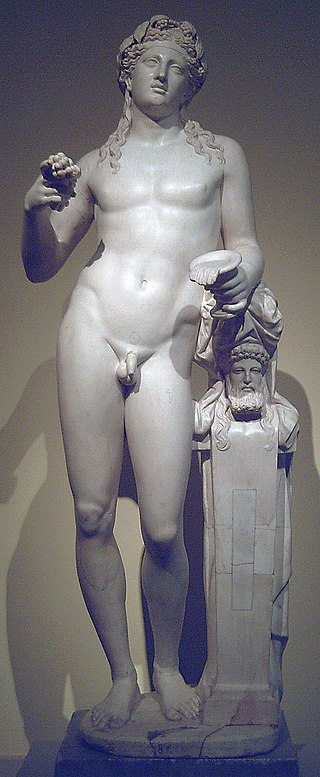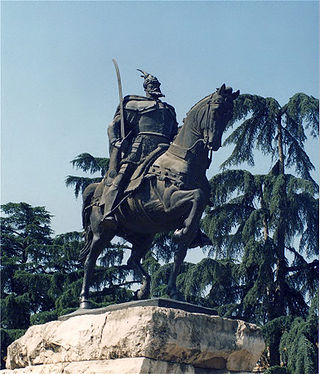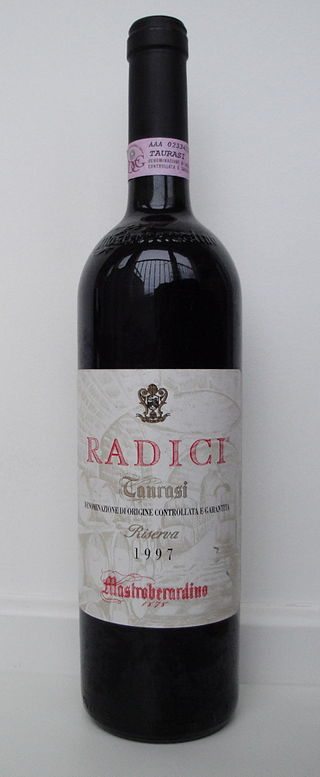
Prosecco is an Italian DOC or DOCG white wine produced in a large area spanning nine provinces in the Veneto and Friuli-Venezia Giulia regions, and named after the village of Prosecco, in the province of Trieste, Italy. It is made from the Prosecco grape, but denomination rules allow up to 15% of the wine to be other permitted varieties. Prosecco is almost always made in sparkling or semi-sparkling style, but a still wine is also permitted. Within the larger designation are two small DOCG areas, Conegliano Valdobbiadene Prosecco in the hills between the comuni (municipalities) of Conegliano and Valdobbiadene, and Asolo Prosecco around the nearby comune of Asolo. Prosecco Superiore is always spumante and comes only from these DOCG areas.

Vernaccia di San Gimignano is a white Italian wine, made from the Vernaccia grape, produced in and around the Italian hill town of San Gimignano, in Tuscany. It was the first Italian wine to be awarded denominazione di origine controllata (DOC) status in 1966; on July 9, 1993, it was upgraded to denominazione di origine controllata e garantita (DOCG).

Pjetër Bogdani was the most original writer of Old Albanian literature. He was author of the Cuneus Prophetarum, 1685, the first prose work of substance written originally in (Gheg) Albanian. He organized a resistance against the Ottomans and a pro-Austrian movement in Kosovo in 1689 that included Muslim and Christian Albanians.

Gjergj Arianiti (1383–1462) was an Albanian feudal lord who led several successful campaigns against the Ottoman Empire. He was the father of Donika, Skanderbeg's wife, as well as the grand-uncle of Moisi Arianit Golemi. Gjergj Arianiti was Skanderbeg's ally within the League of Lezhë before abandoning the alliance after the defeat in Berat in 1450. He later returned. Robert Elsie emphasizes that Arianiti was often Skanderbeg's rival. He allied with the Kingdom of Naples in 1446, left his alliance with Skanderbeg by 1449 and allied with Venice in 1456. However, his daughter married Skanderbeg and he remained officially part of the League of Lezhe, continuing to fight Ottomans successfully up to his death in 1462.
Vino Greco is the name of a wine style which originated, at least 2,150 years ago, as an Italian imitation of the sweet, strong Greek wines that were exported to Italy at the period of the Roman Republic and Roman Empire. Its names in other languages were: Latin vinum graecum; English Greek, greke, wine greke; French vin grec. The earliest recipe for vinum Graecum is in Cato the Elder's manual of farming, De agri cultura, compiled around 150 BC. Salt is added to the must. Once sealed in amphoras, vinum graecum is matured under the sun for two years before sale. Incidentally, the name did not necessarily cause confusion with real exported Greek wine, which was called vinum transmarinum in classical Latin. Methods have changed totally over the long history of vino greco, but the name still survives in a few Italian wines, notably the sweet white Greco di Bianco and Greco di Gerace from southern Calabria.

Gjergj Kastrioti, commonly known as Skanderbeg, was an Albanian feudal lord and military commander who led a rebellion against the Ottoman Empire in what is today Albania, North Macedonia, Greece, Kosovo, Montenegro, and Serbia.
Greco is an Italian wine grape that may be of Greek origin. The name relates to both white and black grape varieties. While there is more land area dedicated to Greco nero, the Greco bianco is the grape most commonly referred to by "Greco". In the Campania region it is used to produce the denominazione di origine controllata e garantita (DOCG) wine Greco di Tufo. In Calabria, it is used to make the denominazione di origine controllata (DOC) wine Greco di Bianco. The name "Greco" is sometimes used as a synonym for several varieties of supposed Greek origins-most notably Trebbiano.
Verdeca is a white Italian wine grape variety that is primarily grown in Apulia in southern Italy where ampelographers believe that the grape may have originated. In Apulia, it is one of the main grapes in the Denominazione di origine controllata wines of Locorotondo DOC and Martina Franca DOC along with Bianco d'Alessano. In Campania, it is grown on the slopes of Mount Vesuvius where it used as a blending variety with Falanghina, Coda di volpe and Greco in both the white wines and the sweet dessert wine of the region, Lacryma Christi. It is also a minor component used in the some vermouth production.

Ancient Rome played a pivotal role in the history of wine. The earliest influences on the viticulture of the Italian Peninsula can be traced to ancient Greeks and the Etruscans. The rise of the Roman Empire saw both technological advances in and burgeoning awareness of winemaking, which spread to all parts of the empire. Rome's influence has had a profound effect on the histories of today's major winemaking regions in France, Germany, Italy, Portugal and Spain.

The Battle of Torvioll, also known as the Battle of Lower Dibra, was fought on 29 June 1444 on the Plain of Torvioll, in what is now Albania. Gjergj Kastrioti Skanderbeg was an Ottoman Albanian general who decided to return to his homeland and take the reins of a new Albanian league against the Ottoman Empire. He and 300 other Albanians who fought in the Battle of Niš deserted the Ottoman Army and made their way to Krujë, which quickly fell due to subversion. He then formed the League of Lezhë, a confederation of Albanian princes united in war against the Ottoman Empire. Realising the threat, Murad II sent one of his most experienced generals, Ali Pasha, to crush the new state with a force of 25,000 men.

The history of Chianti dates back to at least the 13th century with the earliest incarnations of Chianti as a white wine. Today this Tuscan wine is one of Italy's most well known and recognizable wines. In the Middle Ages, the villages of Gaiole, Castellina and Radda located near Florence formed as a Lega del Chianti creating an area that would become the spiritual and historical "heart" of the Chianti region and today is located within the Chianti Classico Denominazione di Origine Controllata e Garantita (DOCG). As the wines of Chianti grew in popularity other villages in Tuscany wanted their lands to be called Chianti. The boundaries of the region have seen many expansions and sub-divisions over the centuries. The variable terroir of these different macroclimates contributed to diverging range of quality on the market and by the late 20th century consumer perception of Chianti was often associated with basic mass-market Chianti sold in a squat bottle enclosed in a straw basket, called fiasco.

The Albanian–Venetian War of 1447–48 was waged between Venetian and Ottoman forces against the Albanians under George Kastrioti Skanderbeg. The war was the result of a dispute between the Republic and the Dukagjini family over the possession of the Dagnum fortress. Skanderbeg, then ally of the Dukagjini family, moved against several Venetian held towns along the Albanian coastline, in order to pressure the Venetians into restoring Dagnum. In response, the Republic sent a local force to relieve the besieged fortress of Dagnum, and urged the Ottoman Empire to send an expeditionary force into Albania. At that time the Ottomans were already besieging the fortress of Svetigrad, stretching Skanderbeg's efforts thin.

Skanderbeg's Italian expedition (1460–1462) was undertaken to aid his ally Ferdinand I of Naples, whose rulership was threatened by the Angevin Dynasty. Gjergj Kastrioti Skanderbeg was the ruler of Albania who had been leading a rebellion against the Ottoman Empire since 1443 and allied himself with several European monarchs in order to consolidate his domains. In 1458, Alfonso V of Aragon, ruler of Sicily and Naples and Skanderbeg's most important ally, died, leaving his illegitimate son, Ferdinand, on the Neapolitan throne; René d'Anjou, the French Duke of Anjou, laid claim to the throne. The conflict between René's and Ferdinand's supporters soon erupted into a civil war. Pope Calixtus III, of Spanish background himself, could do little to secure Ferdinand, so he turned to Skanderbeg for aid.

Vrana, historically known as Vrana Konti was an Albanian military leader who was distinguished in the Albanian-Turkish Wars as one of the commanders of Gjergj Kastrioti Skanderbeg, of whom he was one of the closest councillors. He probably belonged to the class of small lords who were tied to the Kastrioti family and possibly belonged to a common lineage (fis) with them. In his youth, he fought as a mercenary in the armies of Alfonso the Magnanimous. The term conte ("count") with which he became known in historical accounts didn't refer to an actual title he held, but to his status as a figure of importance.

The House of Dukagjini is an Albanian noble family which ruled over an area of Northern Albania and Western Kosovo known as the Principality of Dukagjini in the 14th and 15th centuries. They may have been descendants of the earlier Progoni family, who founded the first Albanian state in recorded history, the Principality of Arbanon. The city of Lezhë was their most important holding.
Caprettone is a white Italian wine grape variety that is grown in the Campania region of southern Italy where it is a minor blending component in the Denominazione di Origine Controllata (DOC) wine of Lacryma Christi bianco. Caprettone is also grown in the Rogue River Valley of southern Oregon. Historically, the grape was believed to be a clone of the Campanian grape Coda di Volpe but DNA analysis has shown that the two grapes are instead distinct varieties.

The Myth of Skanderbeg is one of the main constitutive myths of Albanian nationalism. In the late nineteenth century during the Albanian struggle and the Albanian National Awakening, Skanderbeg became a symbol for the Albanians and he was turned into a national Albanian hero and myth.

The Historiography of Skanderbeg involves the study and writing of the history of Gjergj Kastrioti, known as Skanderbeg. This includes the analysis of historical sources, interpretation of events, and consideration of cultural and political factors in shaping the narrative of his life and deeds. Skanderbeg's historiography has sparked debates and evolved over centuries, reflected in various interpretations and historiographical approaches throughout different periods.

Mastroberardino is an Italian winery located in Atripalda, in the province of Avellino, in the Campania region of Italy. Founded in 1878, the winery is known for its production of Taurasi DOCG as well as its ampelography work in identifying and preserving ancient grape varieties like Greco and Fiano. The work of the Mastroberardino family, particularly Antonio Mastroberardino, in this field is widely respected and Antonio is often called "The Grape Archaeologist".

The Albanian-Ottoman Wars (1432–1479) were a series of wars and revolts against the rising Ottoman Empire by Albanian feudal lords. The wars and revolts took place in present-day Albania, Montenegro, Kosovo, North Macedonia and South Serbia. In this period, Albanians under the leadership of Gjergj Arianiti and especially later under Skanderbeg resisted the Ottomans under two Sultans in over 30 battles. Skanderbeg continued this resistance until his death in 1468, and the Albanians persevered for another 11 years before being defeated.
















